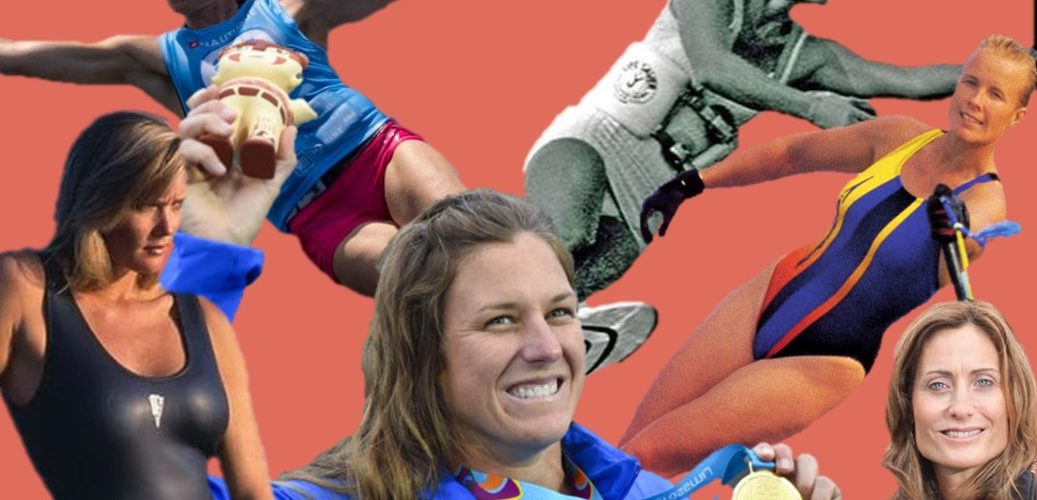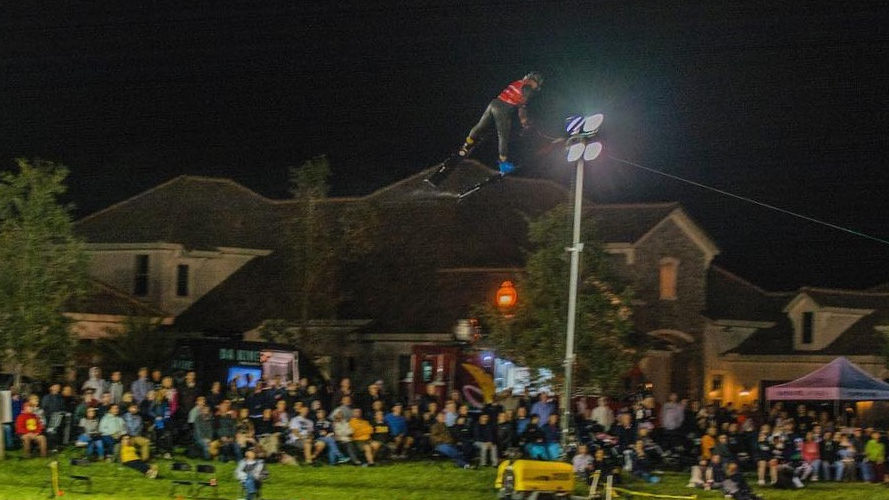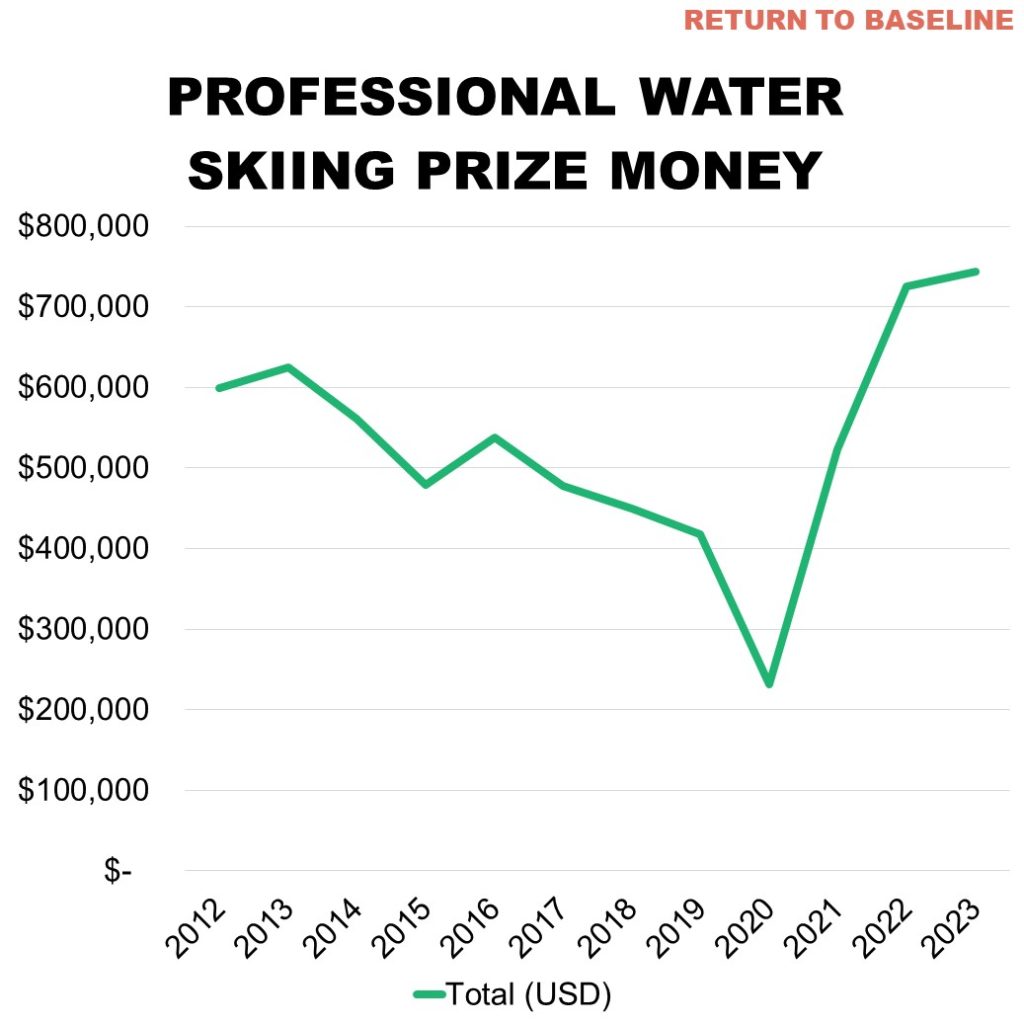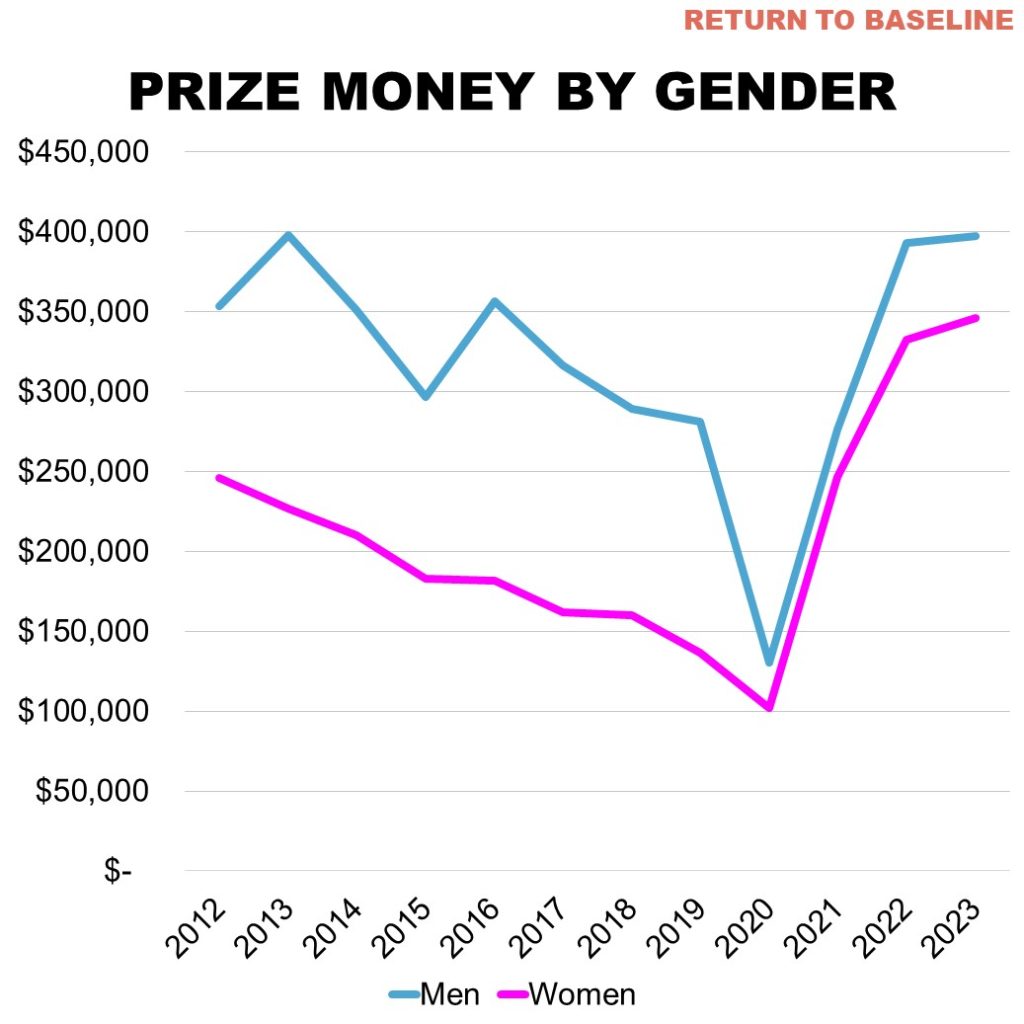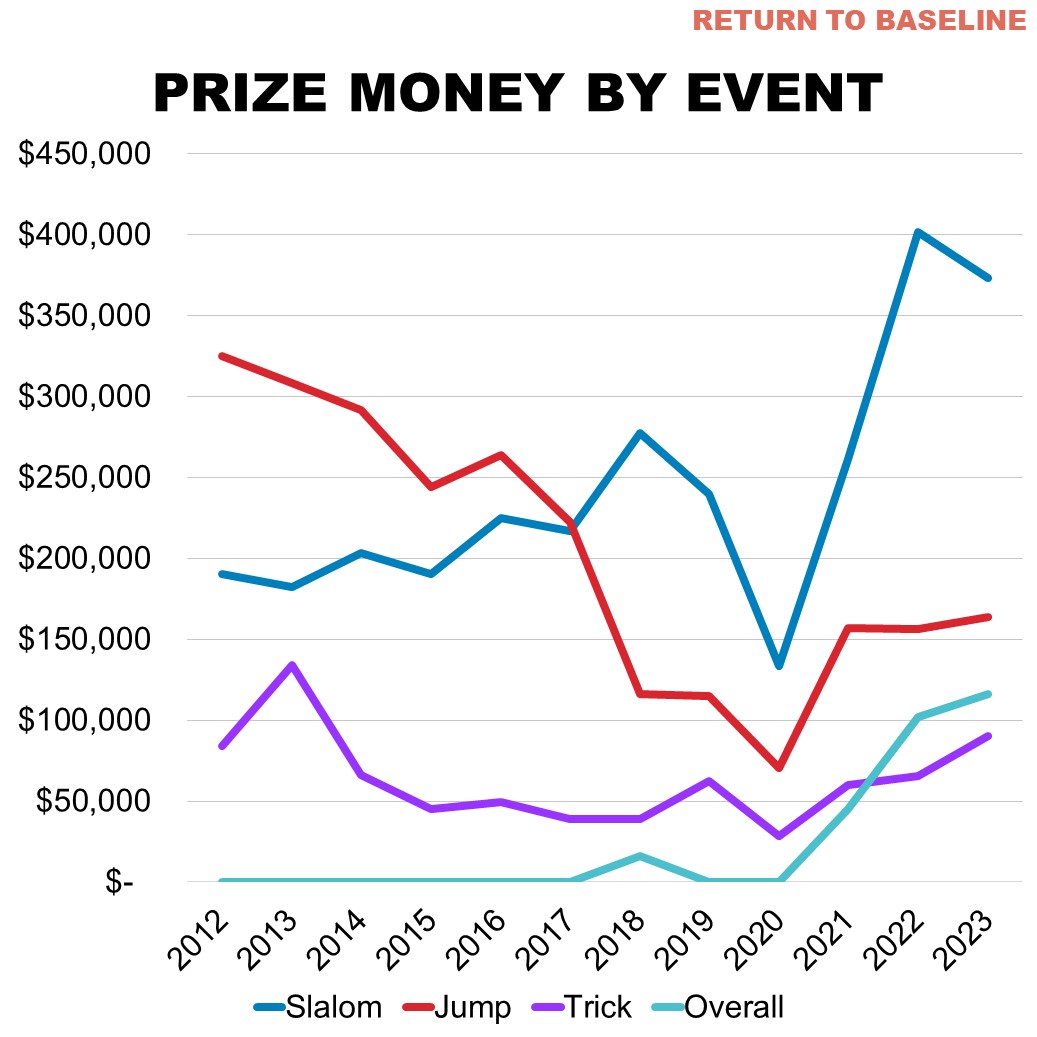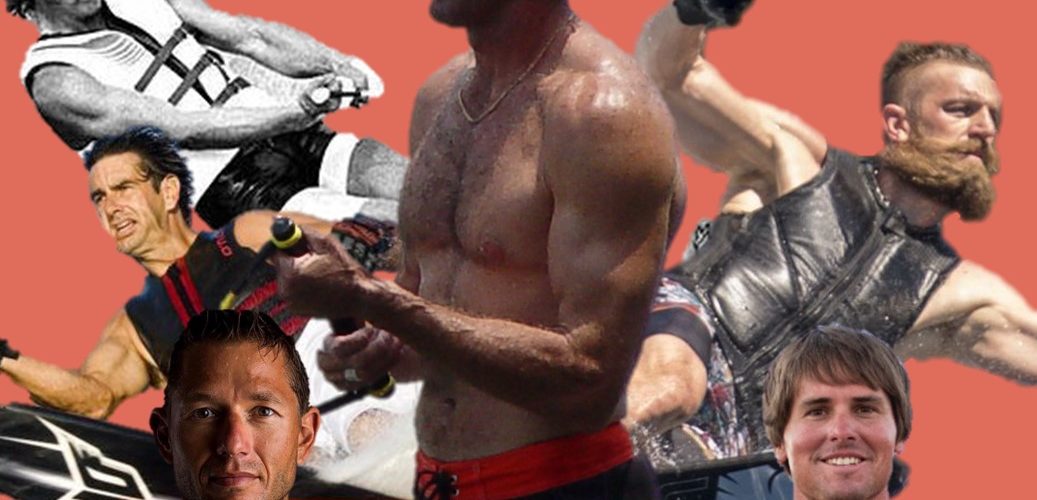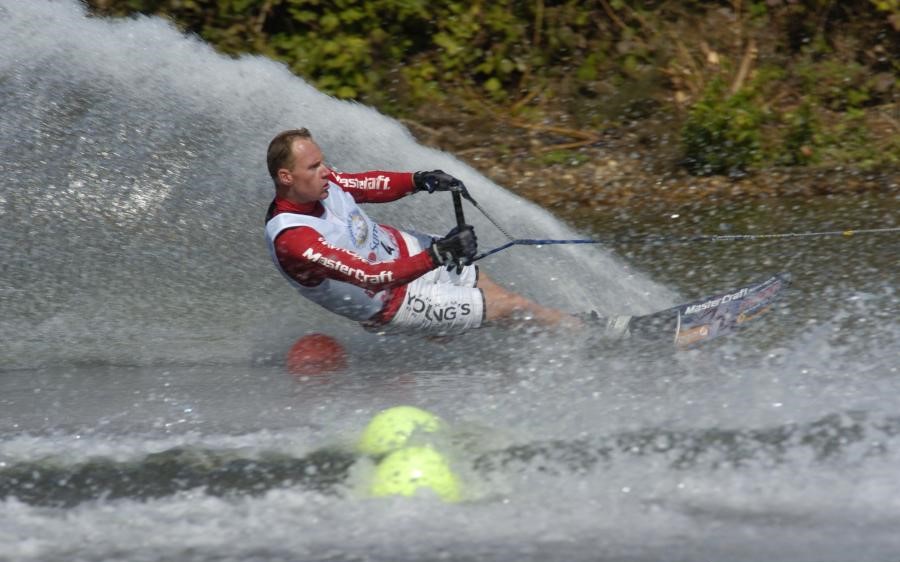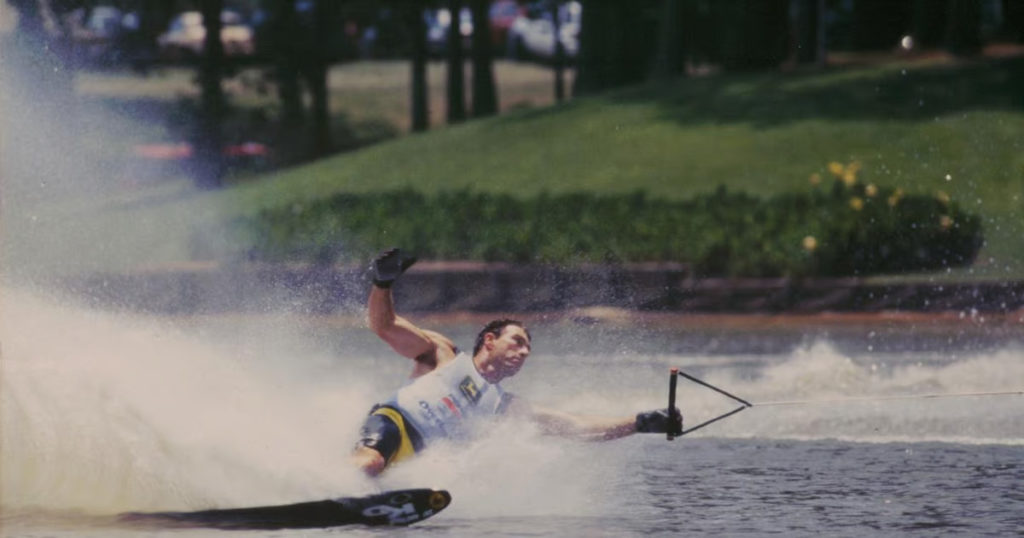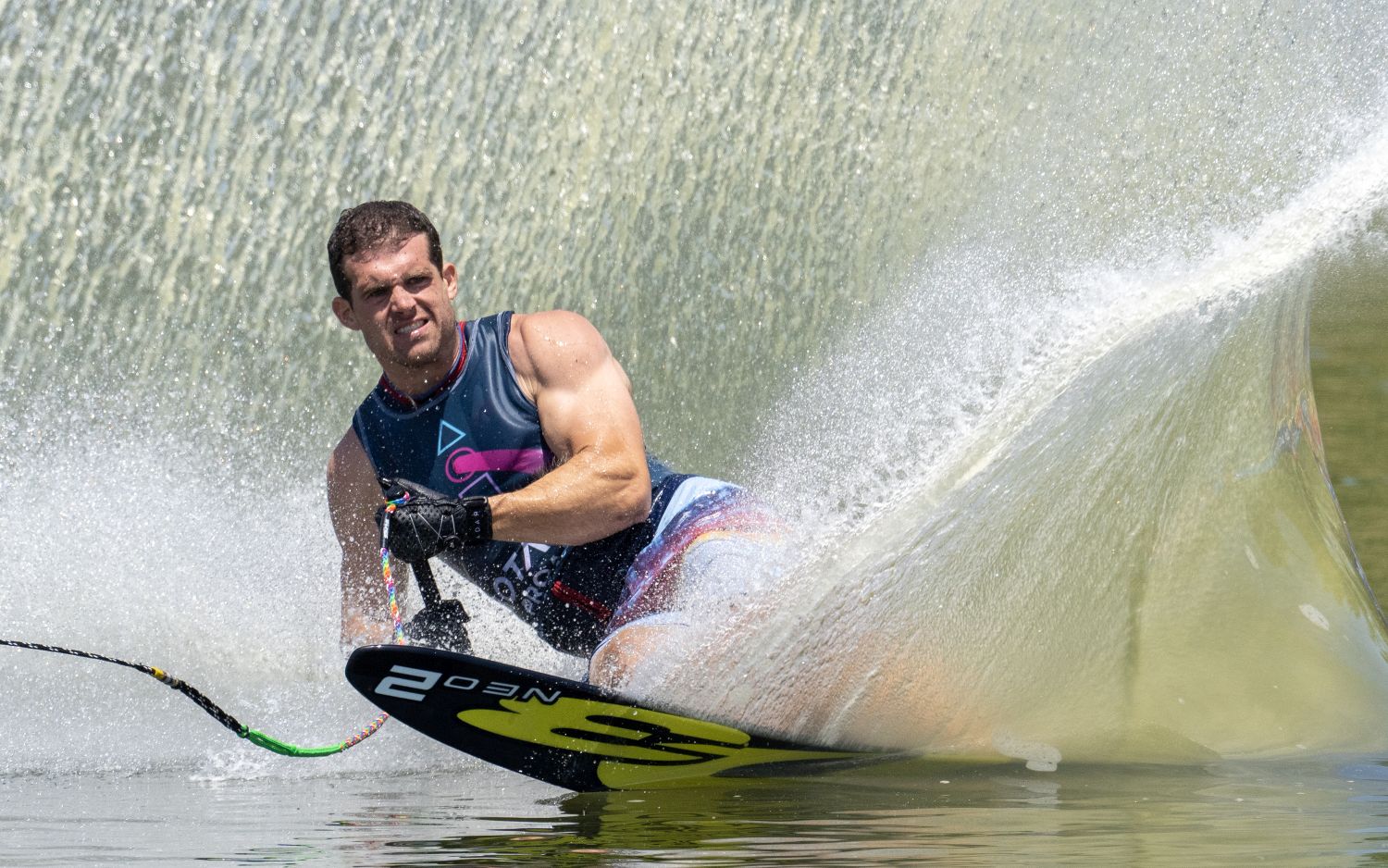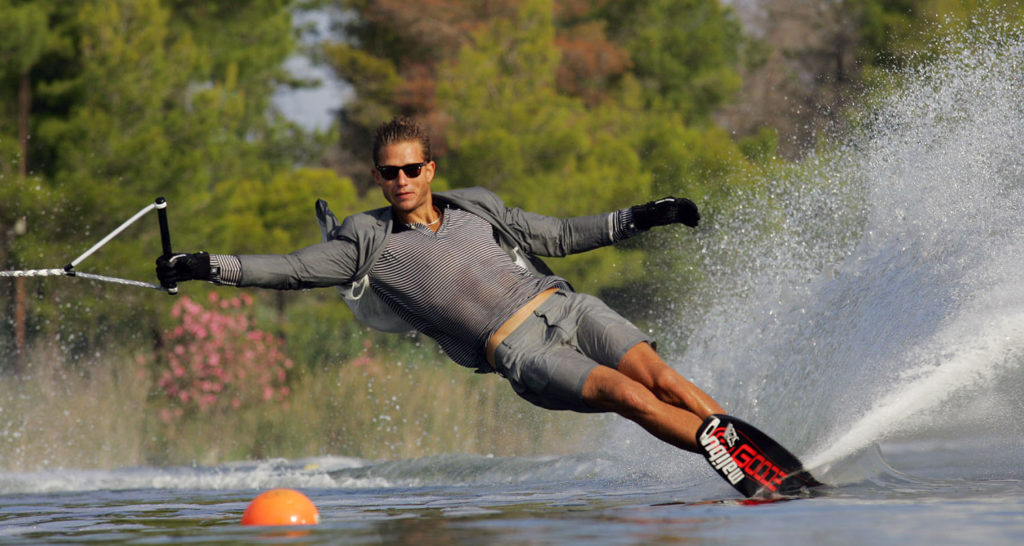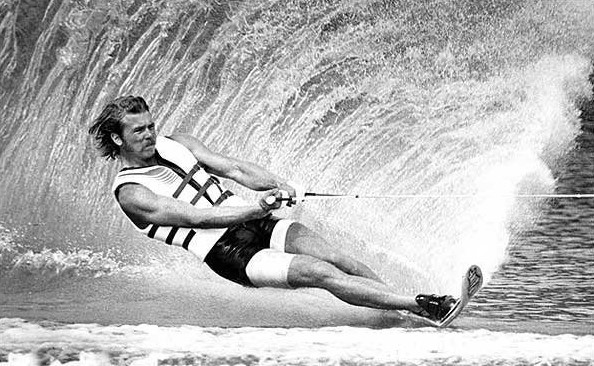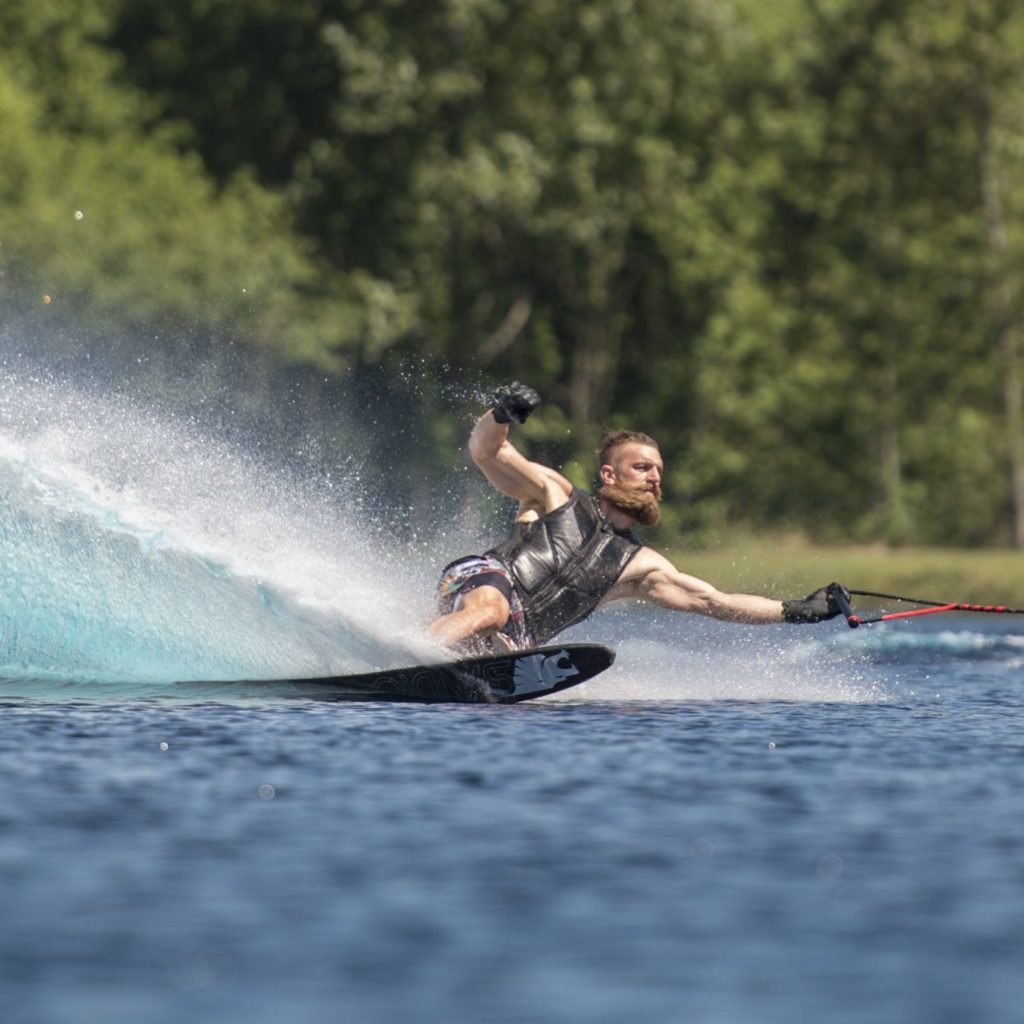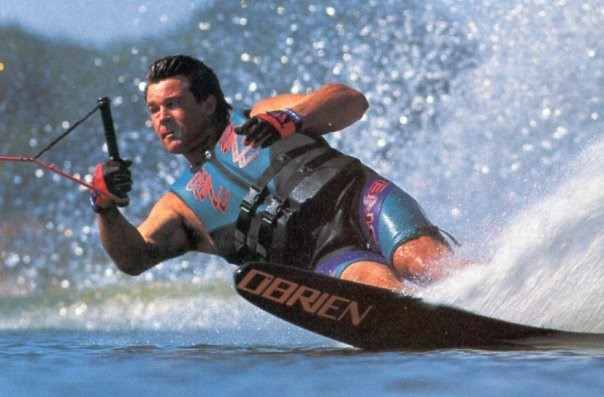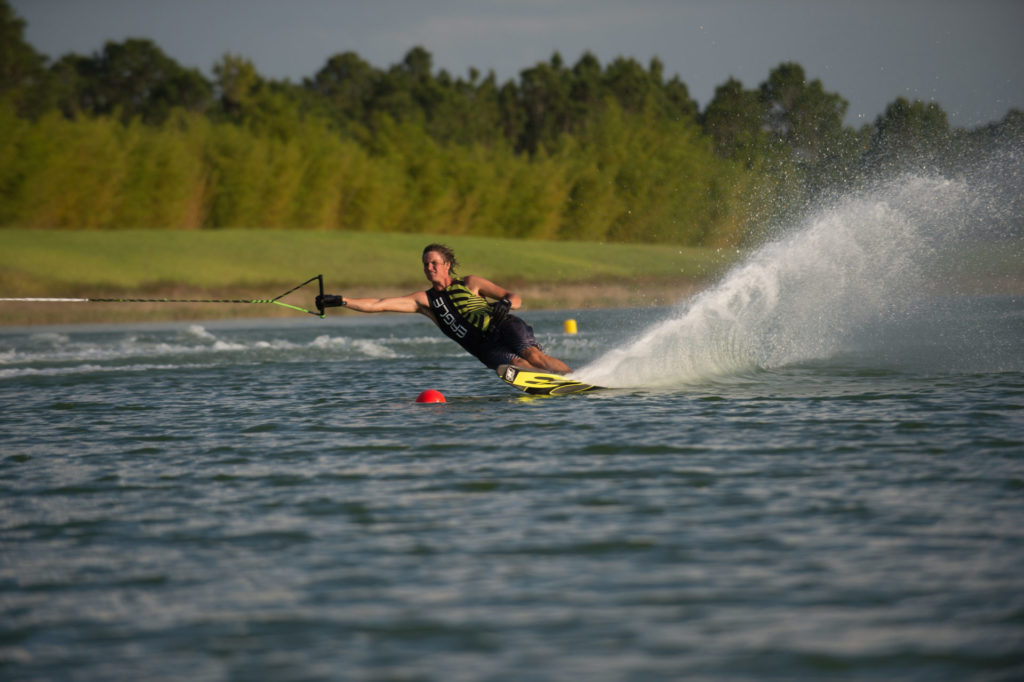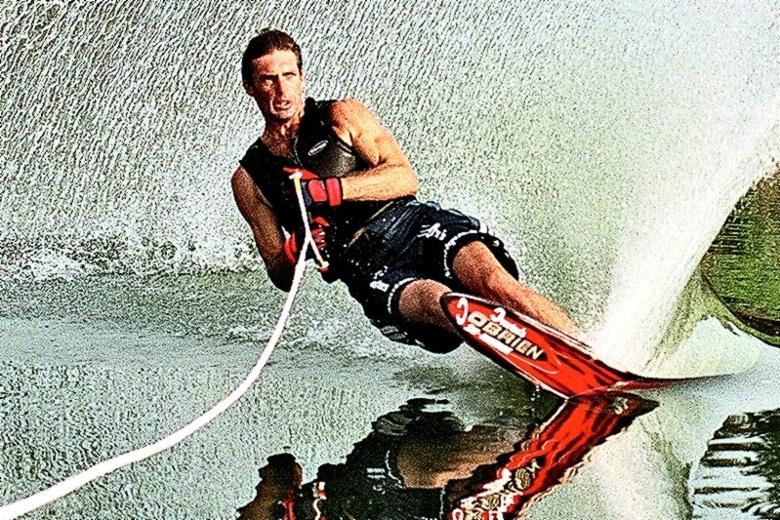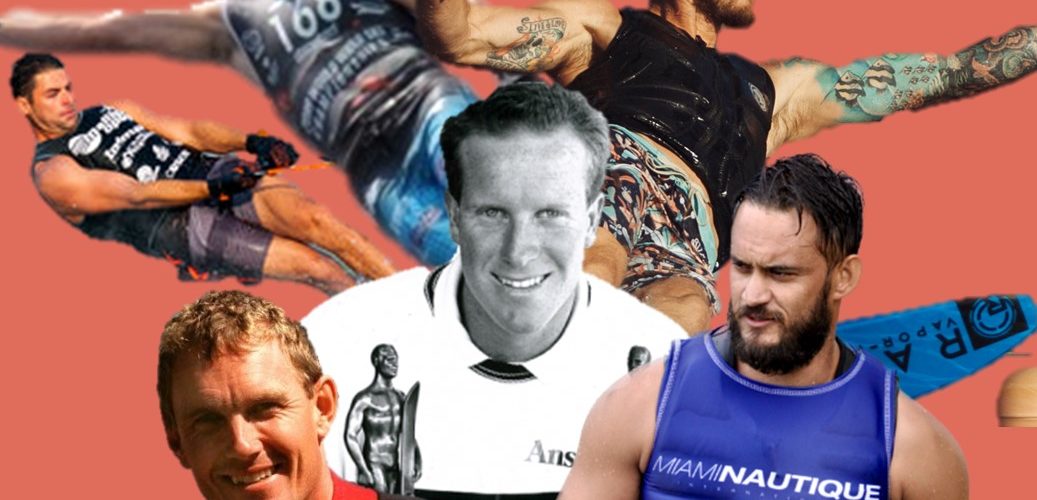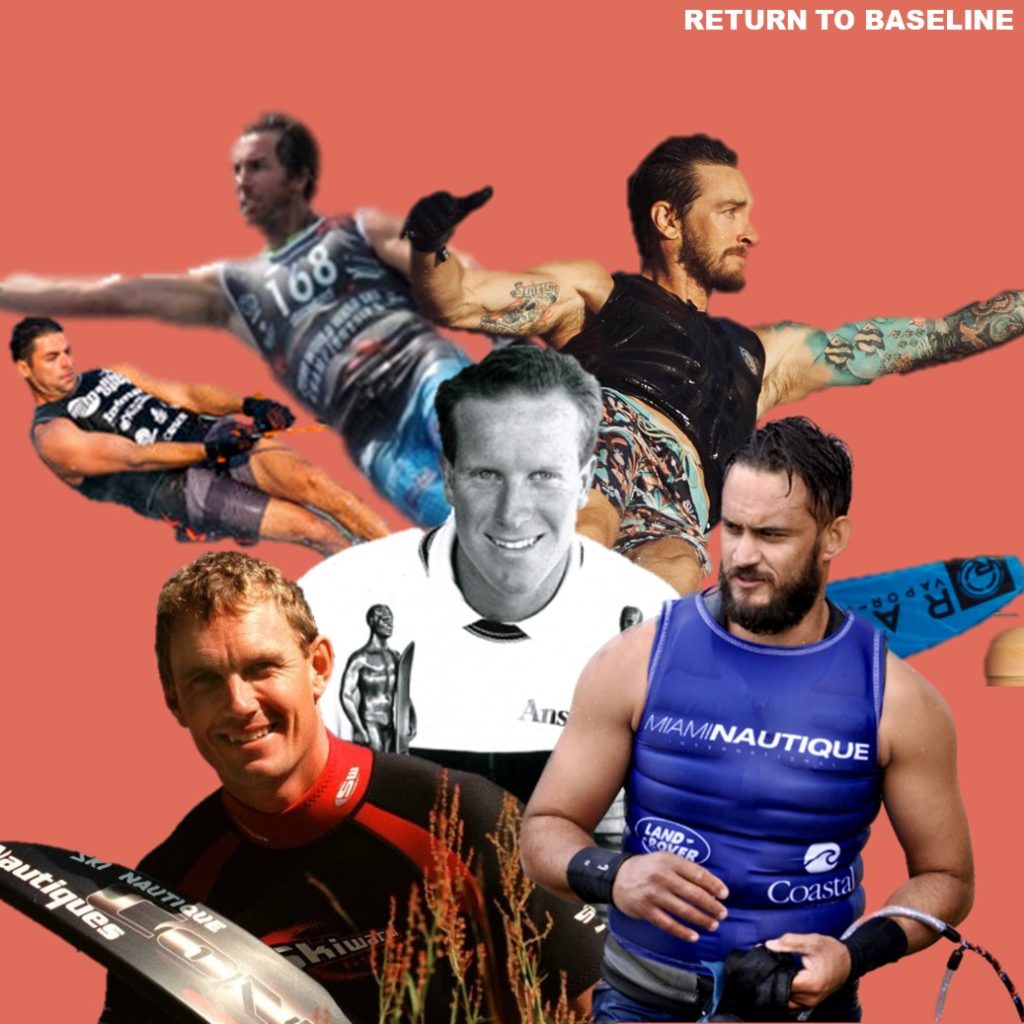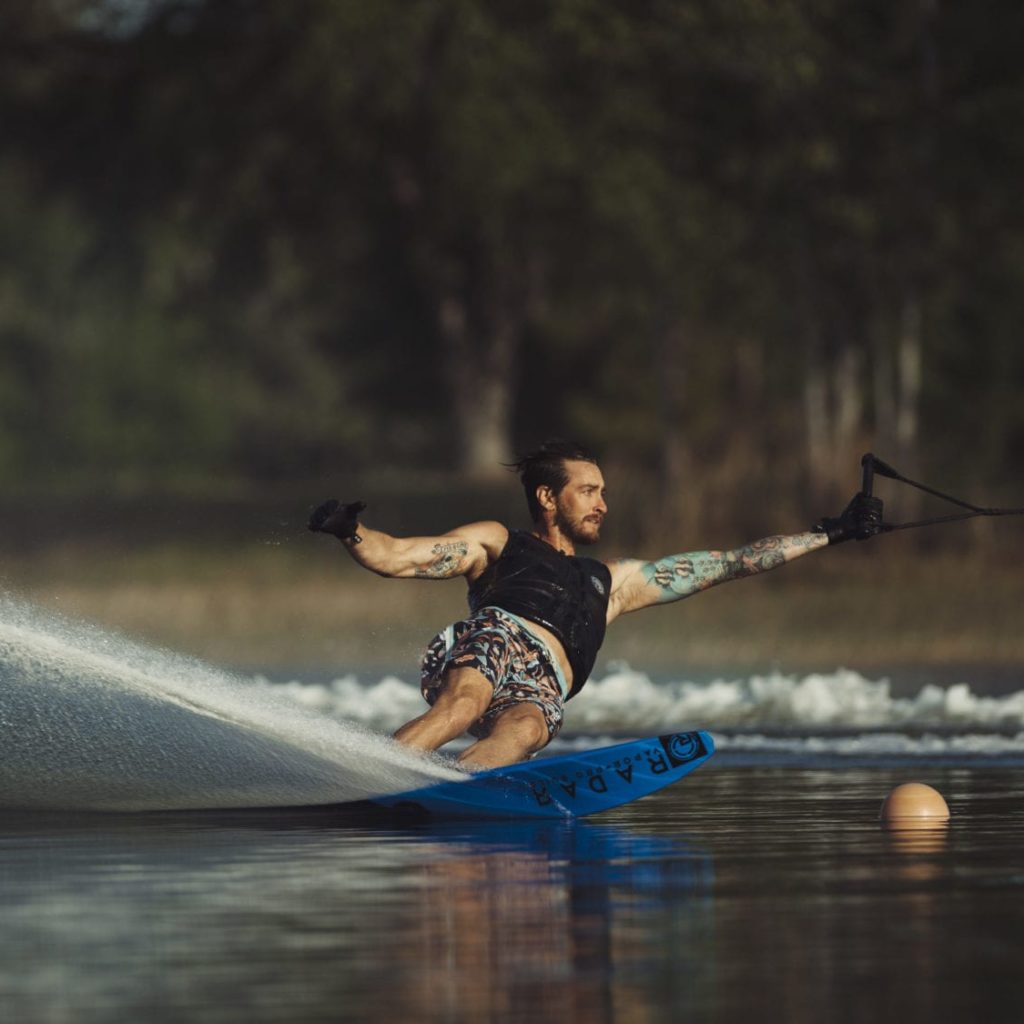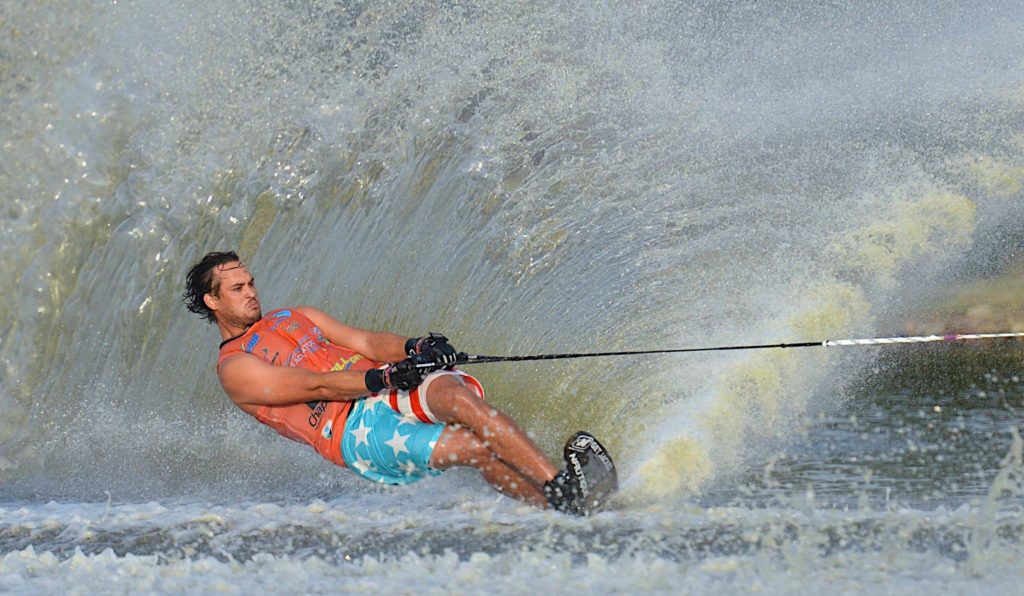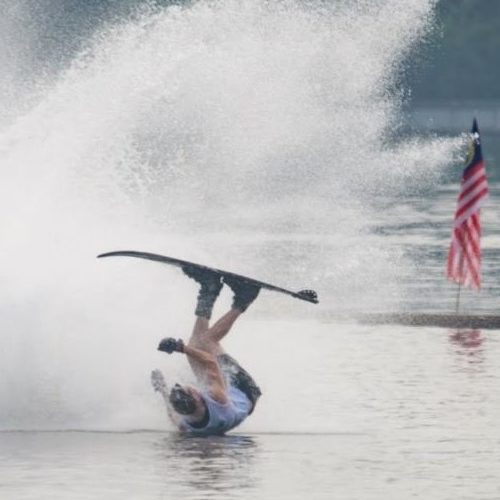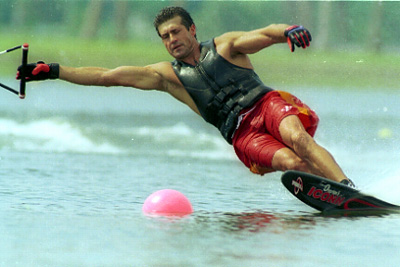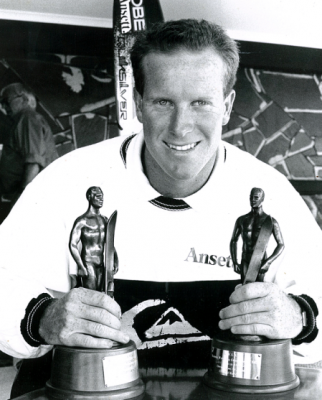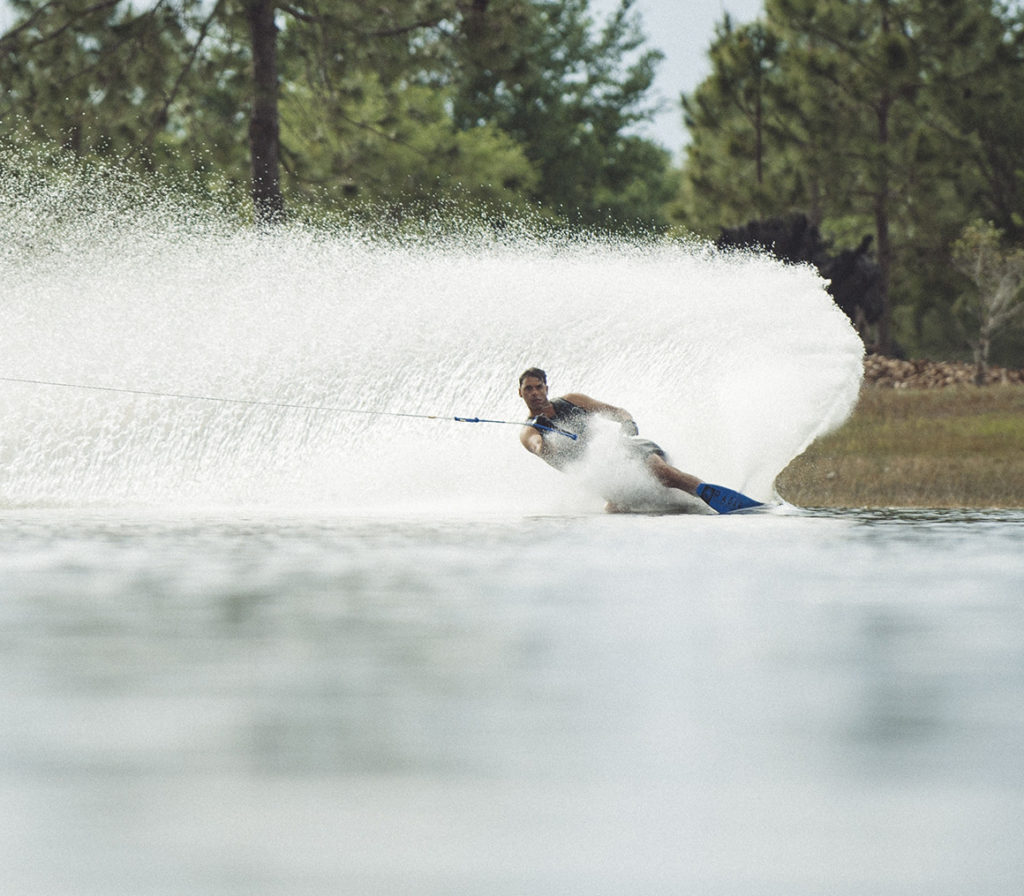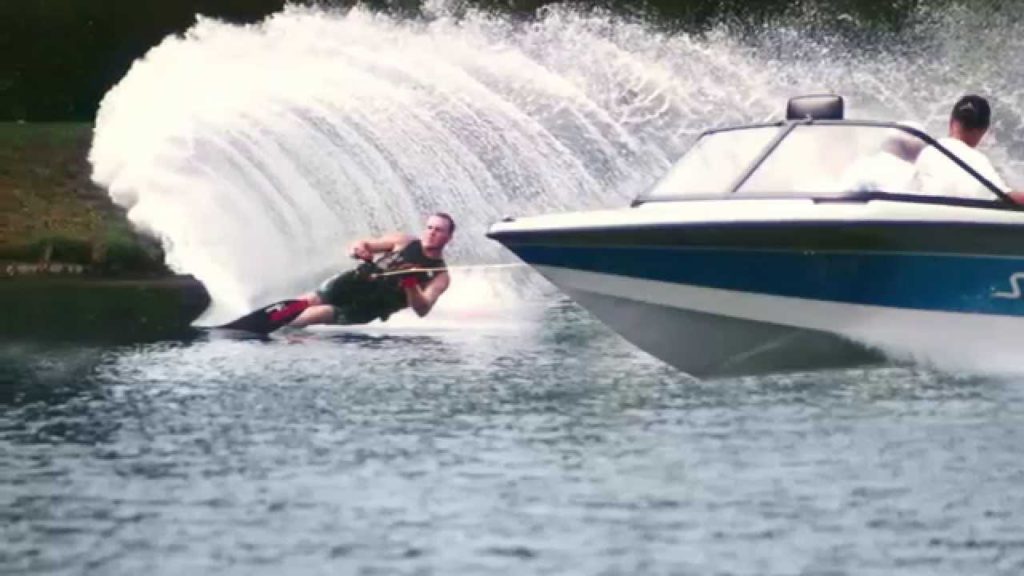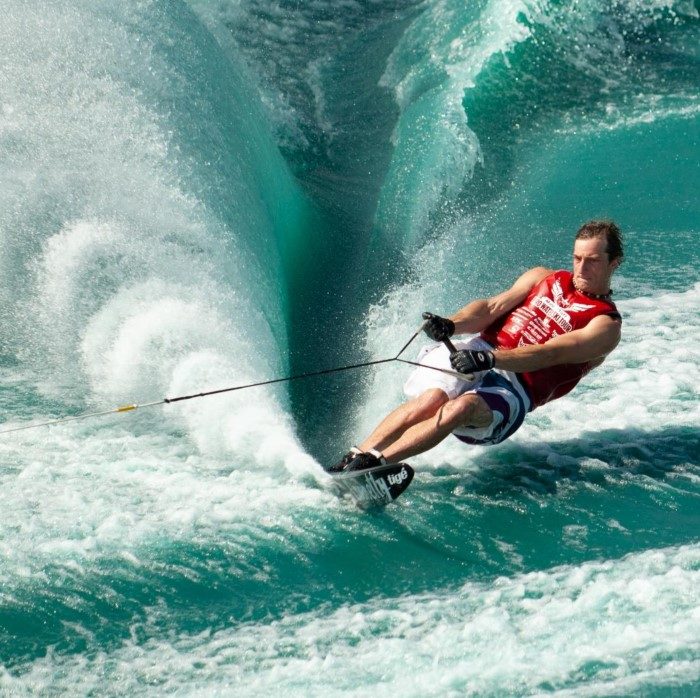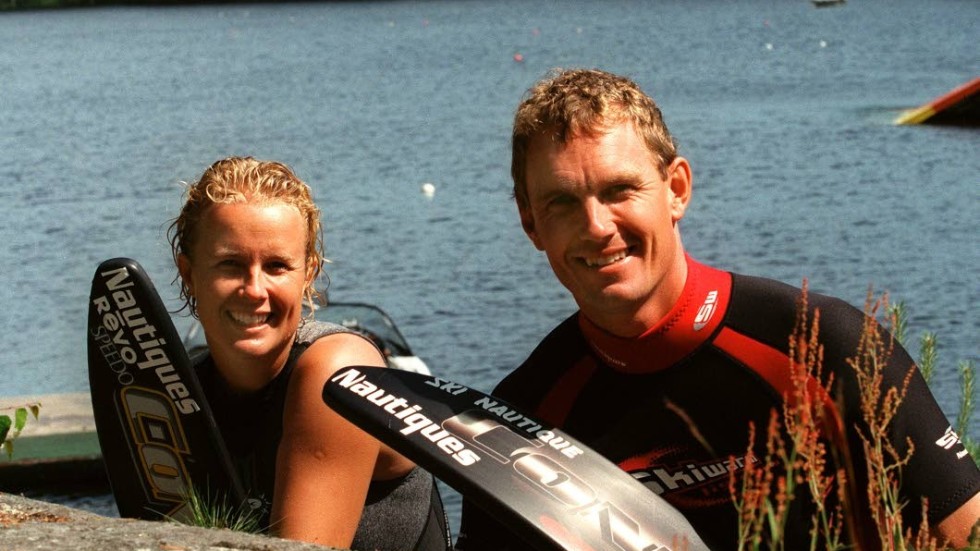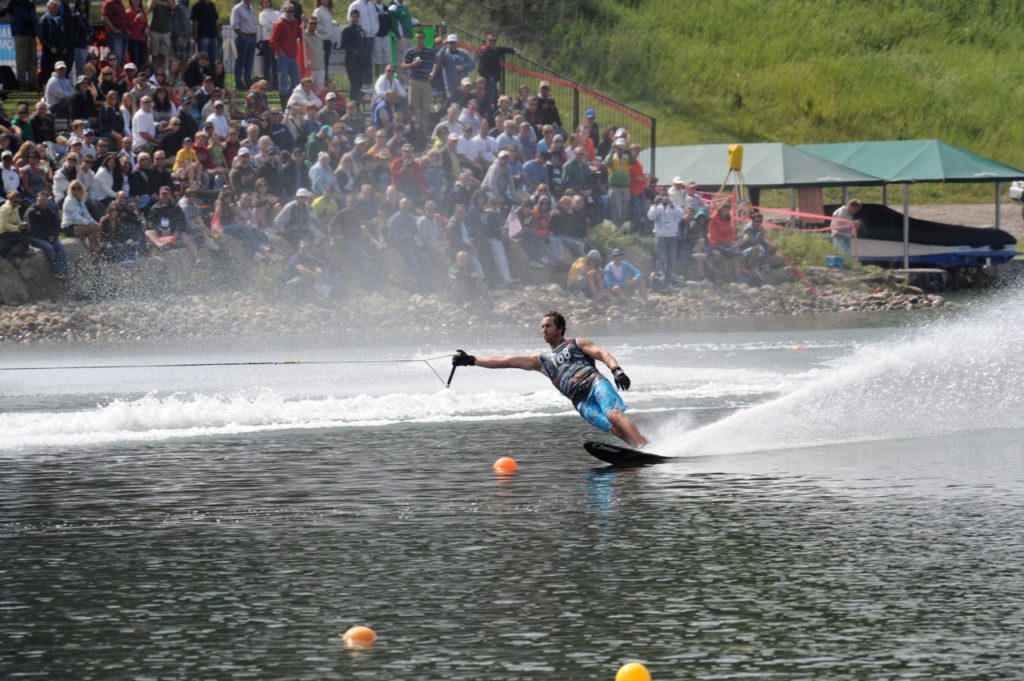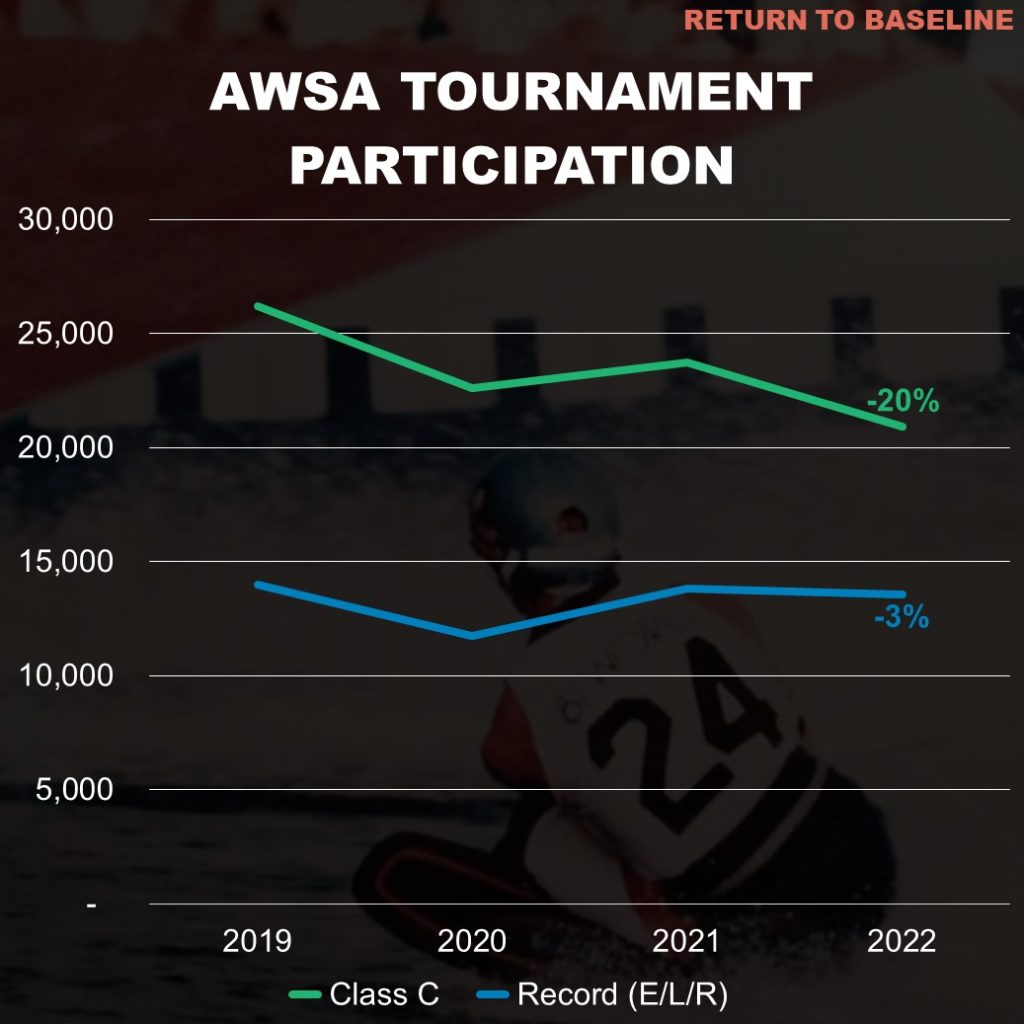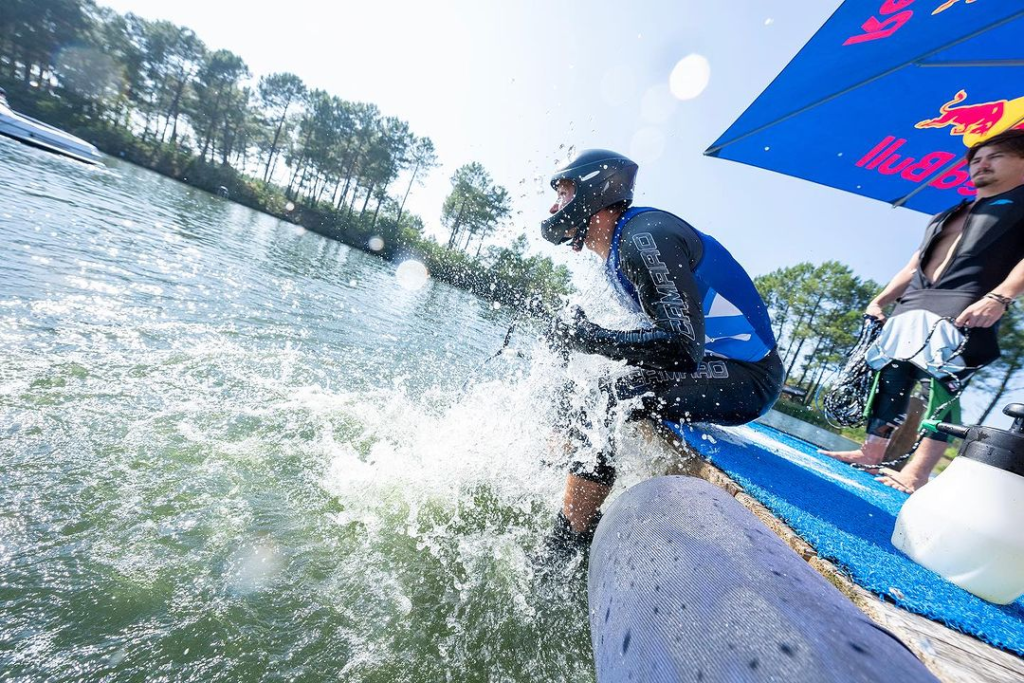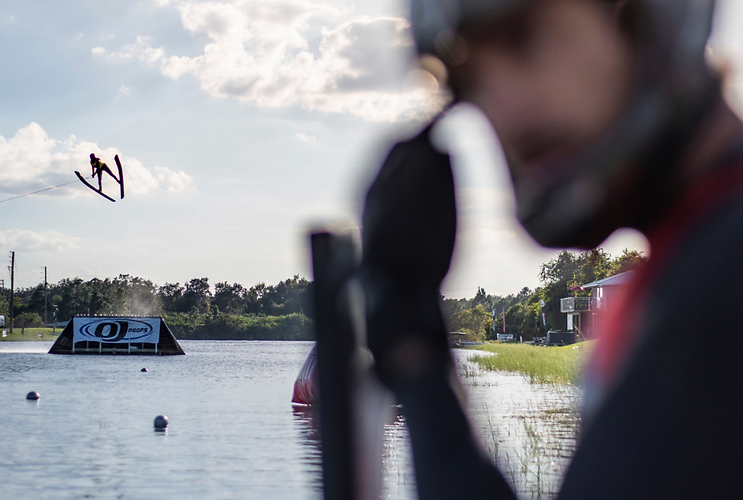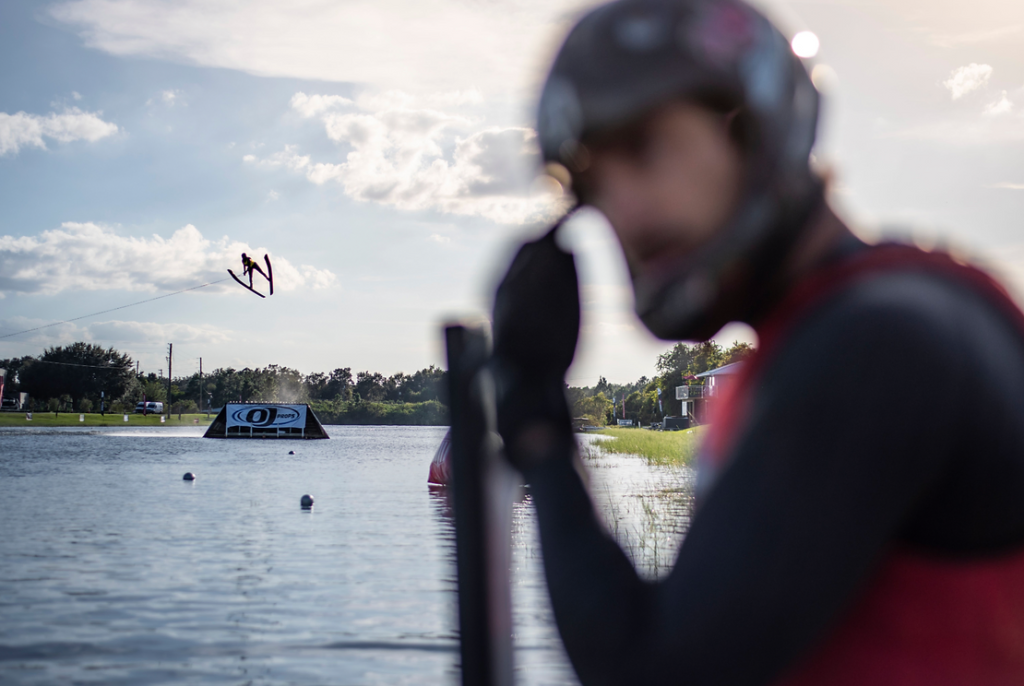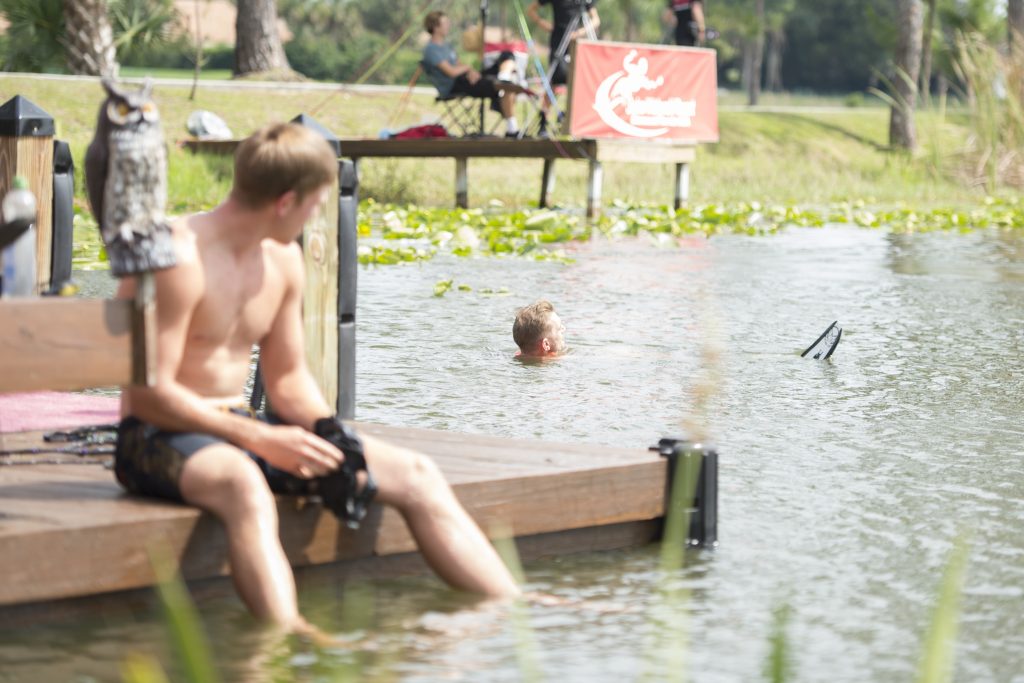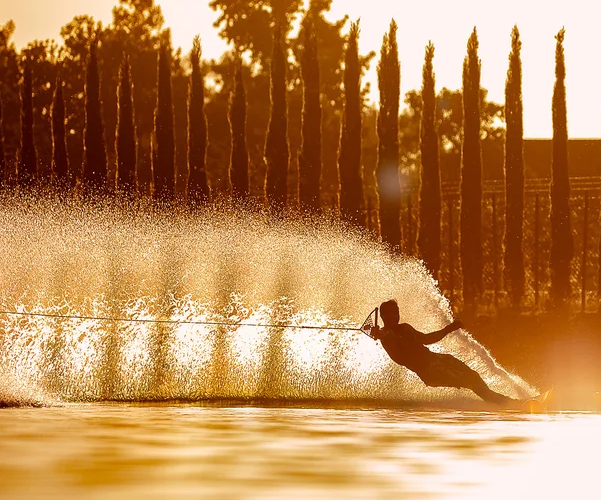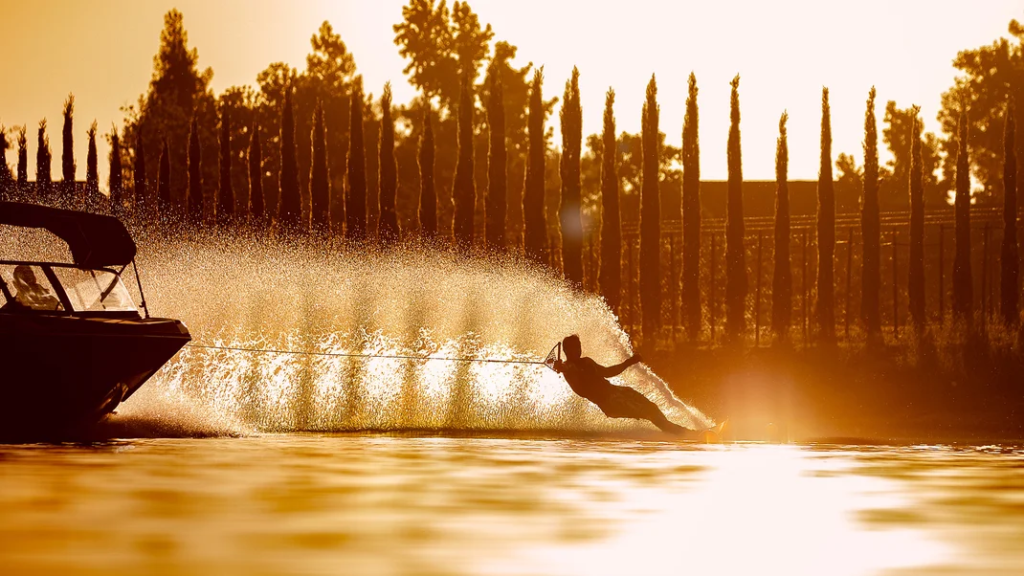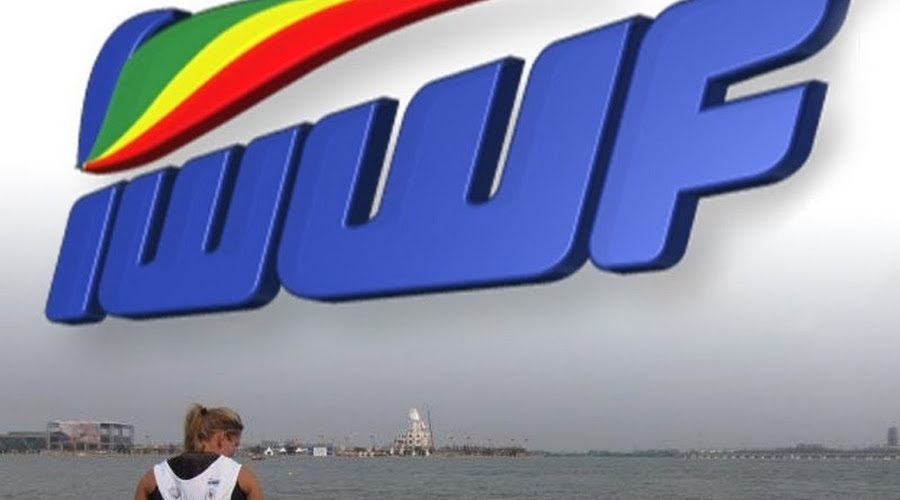The 10 Greatest Women’s Slalom Skiers of All Time, Ranked
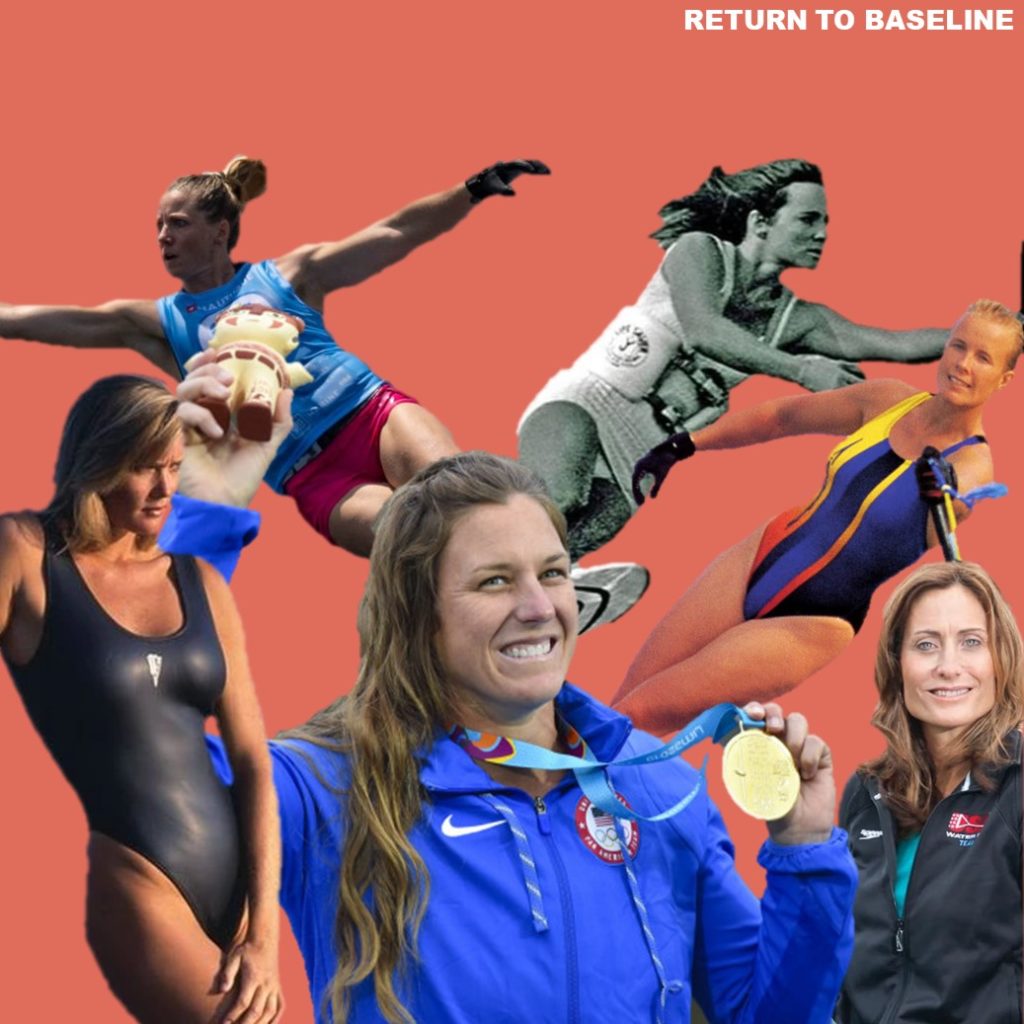
Ranking the best female slalomers of all time.
In the world of water skiing, history has been written by remarkable women who defied limits and left indelible marks on the sport. Crafting an objective ‘Top 10’ list from such a rich tapestry of talent is a daunting task, as each athlete’s journey is a testament to their unique strengths and contributions. Nevertheless, we embark on a quest to honor these athletes who have carved their names into the annals of women’s slalom skiing. Join us as we celebrate their achievements, relive their triumphs, and remember their enduring impact on the sport.
‘Greatest Of’ lists in any sport are inherently subjective and water skiing is no exception. There’s no definitive checklist to crown someone as the absolute best. Every fan out there has their own opinion. But decisions had to be made. We proudly present our picks for the 10 best women’s slalomers in the history of competitive water skiing. So sit back, enjoy, and maybe even debate a little over our choices—after all, that’s the fun of it!

Image: USA-WWF
10. Deena Brush Mapple
The “First Lady of Water Skiing”, though most celebrated for her jump prowess, the California native notched an impressive record in slalom across her 25-year career. She broke or tied the world slalom record five times, holding or co-holding the record throughout most of the 1980s. She secured a place on five World Championships slalom podiums, including runner-up honors in 1983 and 1989. A three-time U.S. Masters slalom champion, she won in 1979, 1983, and at the inaugural professional Masters in 1985, she also clinched the Moomba Masters slalom title in 1990. A steadfast presence on the pro tour in the late 1980s and early 1990s, Deena emerged as the tour champion of the breakaway PAWS Budget Rent-a-Car Waterski Tour in 1990.
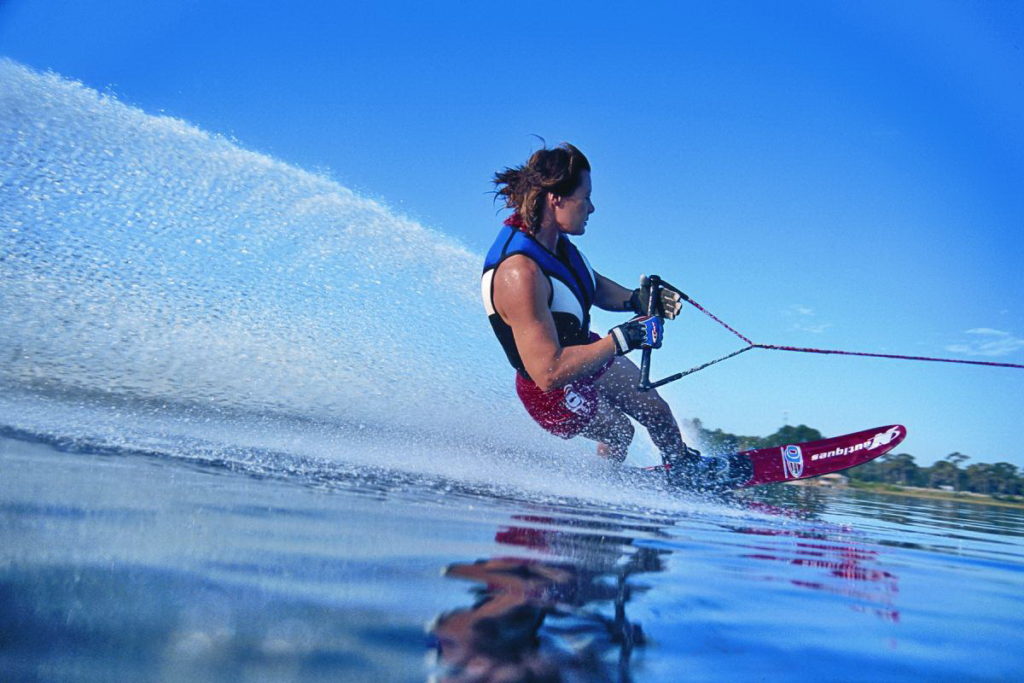
Habermann recognised for her success. (image: The Courier Mail)
9. Emma Sheers
The determined Australian burst onto the scene as one of the best jumpers in the world during the 1990s, yet it was in the slalom event that she truly ascended in her later career. Emma dominated women’s slalom in the early 2000’s, securing back-to-back World Championships in 2001 and 2003. She won the Moomba slalom title three times (in 2003, 2005, and 2008) and achieved consecutive U.S. Masters slalom victories in 2003 and 2004. Her consistency earned her the distinction of the top ranked elite slalom skier in 2003 and 2004.
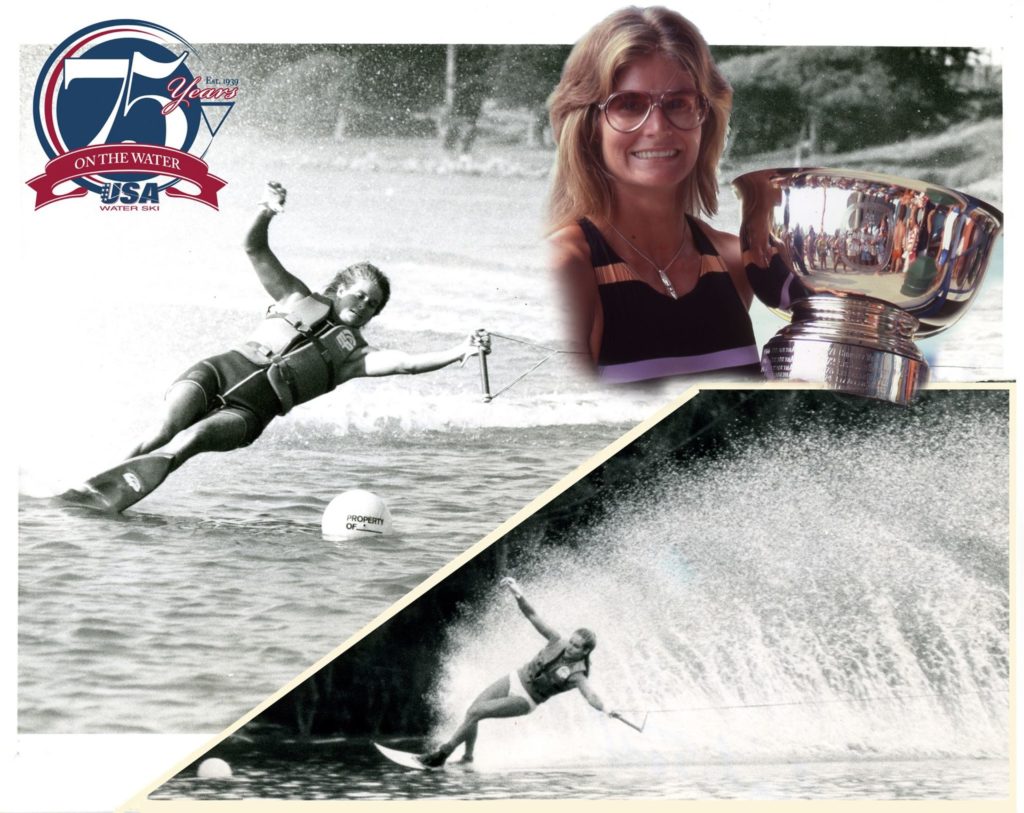
Cindy Todd, overall skier extraordinaire (image: USA Water Ski & Wake Sports)
8. Cindy Todd
An outstanding overall skier who almost drifted away from the sport during her teenage years, Cindy (then Hutcherson) swept both the Junior Girls’ and Girls’ Divisions at U.S. Nationals as a teenager. Her return to the competitive arena was spurred by her husband, the now renowned boat driver Les Todd. In her comeback season in 1975 she broke the world slalom record on her way to clinching her first Open Women’s title at the U.S. Nationals. Over her career, she would break the record four more times, contributing to increasing the record a full pass from 2@12m (35’ off) to 2@11.25m (38’ off). With three world slalom championships (in 1977, 1981, and 1983) and three U.S. Masters titles (in 1976, 1981, and 1982), Cindy cemented her legacy as one of the greatest in the sport.
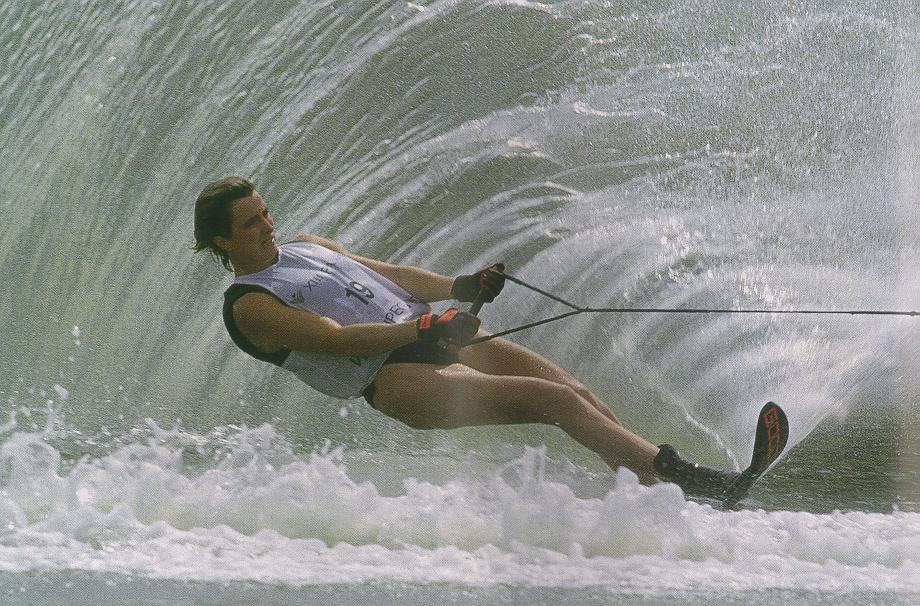
Susi Graham at the 1999 Pan Am Games. (image: IWSF)
7. Susi Graham McCormick
Part of the first husband-wife duo to enter the international water ski Hall of Fame, Susi and Ricky McCormick both etched their names in water ski history. Susi, a Canadian, set the bar by becoming the first woman to run 11.25m (38’ off). She either held or co-held the world record for six consecutive years during the early and mid-1990s. While never quite securing top honors, she featured on the World Championships podium four times between 1989 and 1999 and contributed significantly to Canada’s team victories in 1991, 1993, and 1999. She won five U.S. Masters titles, five U.S. Open titles, and took out the season title on the 1989 Coors Light Water Ski Tour, 1993 Budweiser Water Ski Tour, and twice on the Café de Columbia World Cup in 1997 & 1998.
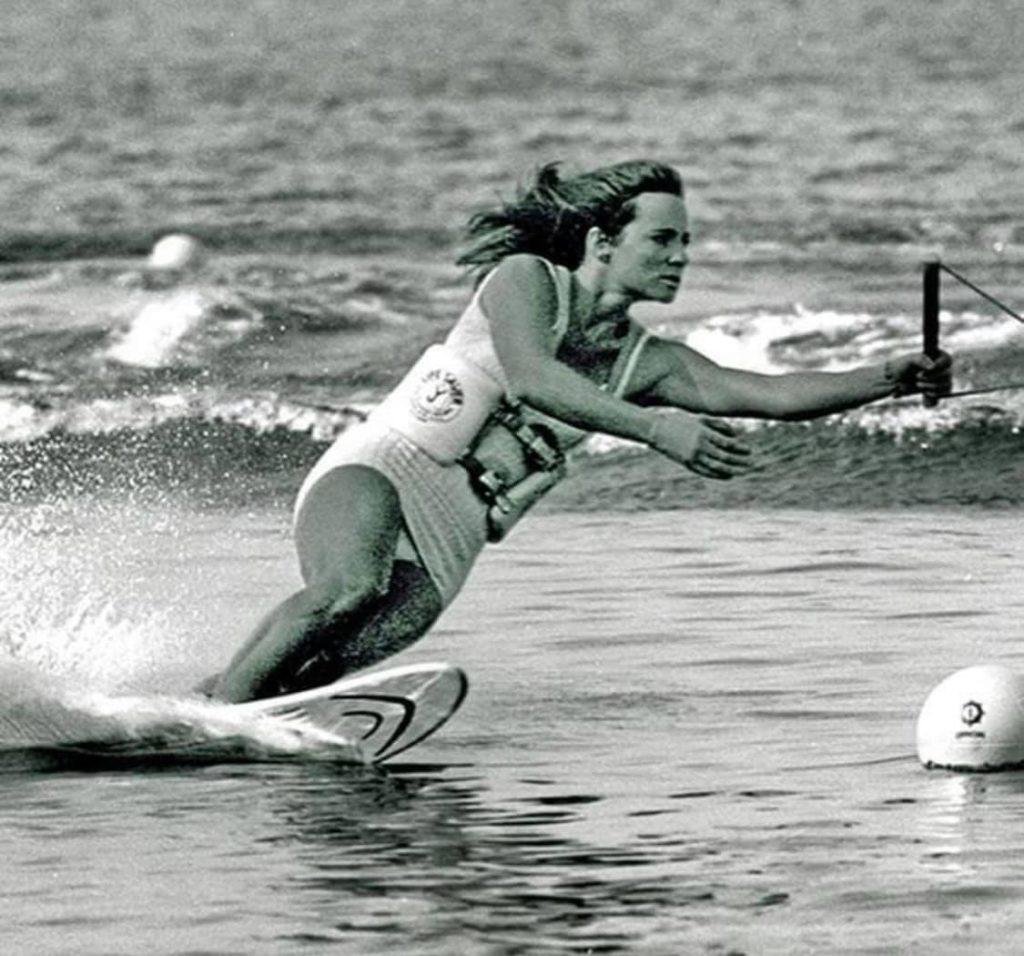
Champion skier Liz Allen Reid (image: Facebook)
6. Liz Allan
Despite competing in the pre-professional era, Liz accumulated an unparalleled competitive record, possibly unrivaled by any skier, male or female. Over her 13-year career, she clinched 42 U.S. National titles, consistently securing a minimum of two titles each year. In a stunning feat, she emerged victorious in all three events at the U.S. Nationals, World Championships, and U.S. Masters in 1969. She thrived in the slalom event, achieving three world championships (in 1967, 1969, and 1975), two runner-up finishes (in 1965 and 1973), and five U.S. Masters slalom titles, including a run of three consecutive titles (from 1973 to 1975). Given the opportunity to compete in more tournaments she could easily be much higher up this list.
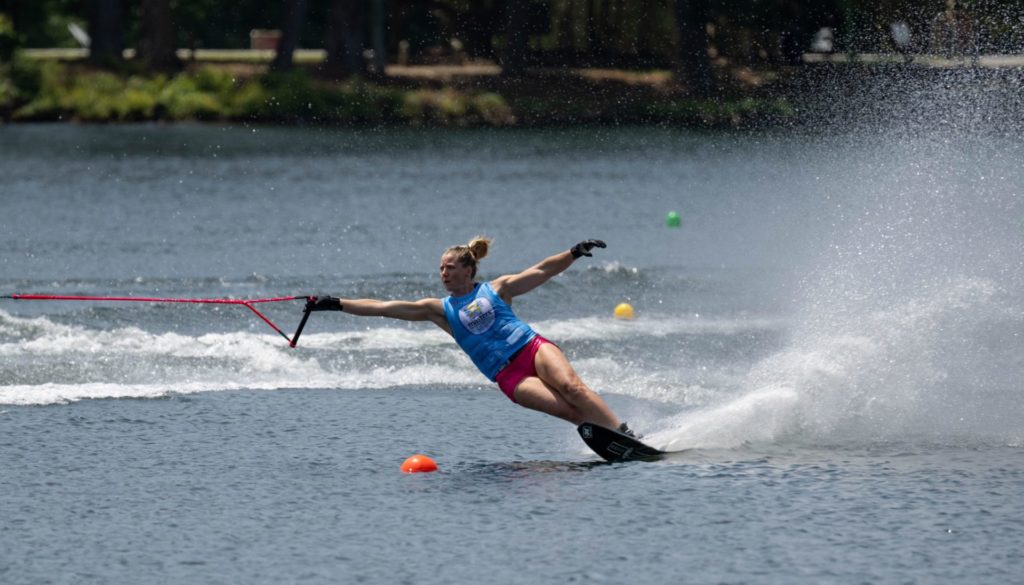
Ontario’s Whitney Mcclintock Rini at the Masters (image: Waterski & Wakeboard Canada)
5. Whitney McClintock Rini
The “Golden Girl” from Canada, Whitney introduced herself to the elite stage by clinching three gold medals (in slalom, trick, and overall) at the 2009 World Championships in Calgary. From 2009 to 2017, she featured on every World Championships slalom podium, earning back-to-back world titles in 2009 and 2011. Her tie with the world record in 2012 and subsequent score of 2.25@10.25m (41’ off) remains a remarkable feat surpassed by only one other skier to this day. She is a former U.S. Masters and U.S. Open slalom champion, but her domination at the Moomba Masters stands out, boasting an impressive streak of eight consecutive victories from 2011 to 2019. Her slalom prowess earned her four seasons as the top ranked elite slalom skier in 2011, 2013, 2014, and 2017.
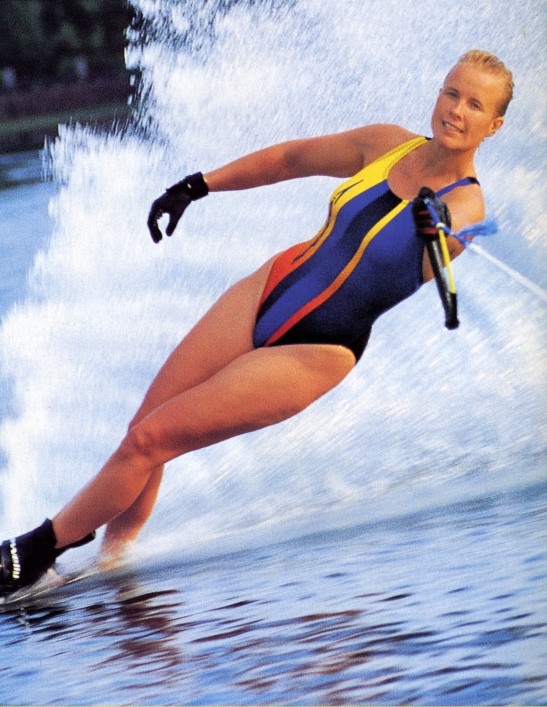
Sweden’s four-time world slalom champion, Helena Kjellander. (image: Tumblr)
4. Helena Kjellander
While her brother Mike might be more memorable for his unique slalom style, Helena achieved something her brother could not – dominating the top of the World Championships podium throughout the 1990s. She won an incredible four consecutive World Championships from 1991 to 1997, a feat that remains unparalleled in women’s slalom. Thriving under pressure, two of her victories came in run offs, one against Toni Neville in 1993 and another after a three-way tie with Kristi Overton-Johnson and Susi Graham in 1995.
On the professional circuit, Helena triumphed as a two-time U.S. Masters champion (in 1989 and 1993), back-to-back Moomba Masters titleholder (in 1994 and 1995), and claimed the 1990 Michelob Dry Waterski Tour season championship after a fierce yearlong rivalry with Overton-Johnson and Brush Mapple.
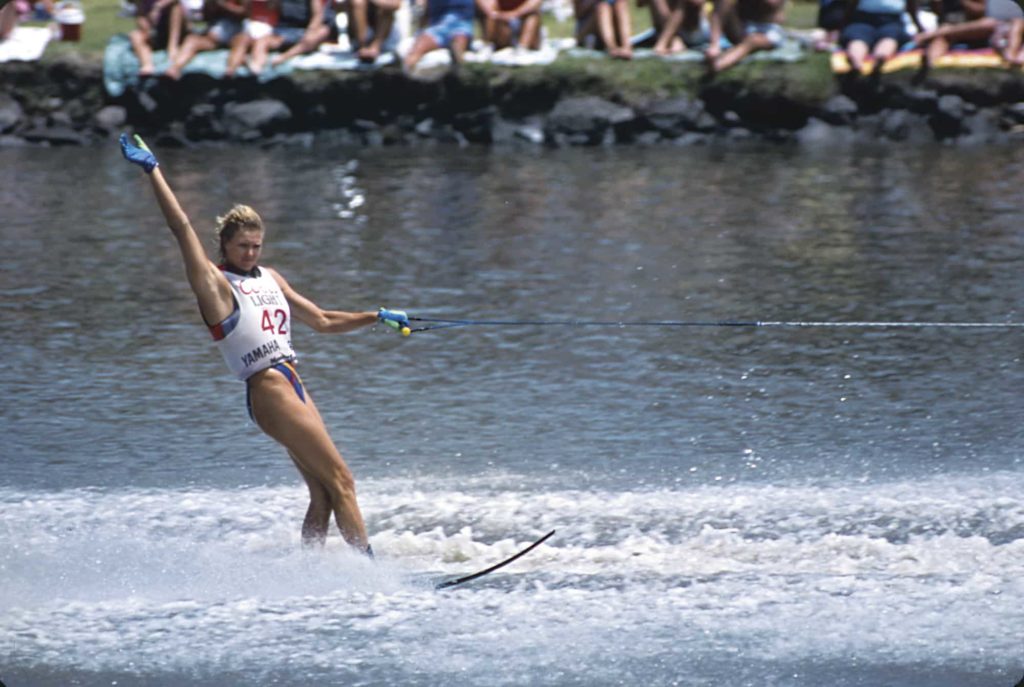
Camille Duvall-Hero was a strong advocate for women’s skiing. (image: Tom King)
3. Camille Duvall
Recognized as “the best-known female water skier in history” upon her retirement by USA Today and featured among Sports Illustrated’s “100 Greatest Female Athletes of the Century,” Camille was the poster girl of the pro tour during its inaugural decade. Arguably, the inclusion of women’s skiing in the 1980s’ pro tour owes much to Camille’s marketability and star power.
Demonstrating a dominance that has only ever been matched by Andy Mapple, Camille claimed the tour champion title for an impressive five consecutive seasons (Mapple’s best was also five), winning the Coors Light Water Ski Tour every year from its inception in 1984 to 1988. Remarkably, this streak encompassed over 20 individual tour stop victories throughout the 1980s. In addition to her pro tour achievements, she clinched the 1985 World Championships title and secured a runner-up position in 1987. Notably, 1987 marked her retirement from amateur events, coinciding with her accomplishment as the first woman to earn a six-figure sum in a single year through prize money and endorsements. Camille was also a three-time U.S. Masters champion, with back-to-back wins in 1986 and 1987.
Her contributions to the sport transcend her on-water triumphs. In 1990, she initiated and managed the breakaway PAWS Budget Rent-a-Car Waterski Tour, an endeavor aimed at improving skiing conditions and prize money for athletes. Even after retiring, Camille continued her involvement by assuming roles as a reporter and producer for ESPN, Fox Sports, and other platforms, consistently promoting professional water skiing.
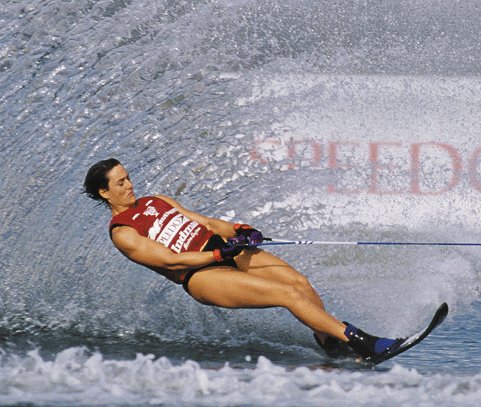
Elite Skier Kristi Overton Johnson USA (image: IWSF)
2. Kristi Overton-Johnson
Kristi Overton-Johnson, talented from a young age, initially found success in trick skiing, claiming back-to-back victories at the 1985 and 1986 U.S. Masters. However, her career really took off after she decided to specialize in slalom from 1989 onwards. A trailblazer, Kristi was the first woman to run 10.75m (39.5’ off), setting a world record of 1@10.25m (41’ off) in 1996 that remained unbroken until Regina Jaquess managed an extra quarter buoy 14 years later.
She was a six-time U.S. Masters champion, four-time U.S. Open champion, and secured multiple Moomba Masters titles, including back-to-back victories in 1996 and 1997. Kristi’s dominance earned her the season titles of the 1992, 1994, and 1995 Budweiser Water Ski Tour, the 1999 Café de Columbia World Cup, back-to-back season titles on the U.S. Pro Water Ski and Wakeboard Tour in 2000 and 2001, and an unbeaten season during the 2000 World Cup series (wining eight out of eight events). Her pro tour achievements are even more impressive when you consider that women’s events were excluded from the U.S. Pro Tour from 1996 to 1999, during the peak of her career.
Perhaps the unluckiest skier in the history of World Championships, Kristi scored enough to win the gold in both 1995 and 1997, only to lose due to bad boat times. She won her sole World Championships in 1999, ending Helena Kjellander’s reign on top of the podium.

Regina Jaquess comeback story (image: Andrews Sports Medicine)
1. Regina Jaquess
Perhaps the greatest water skier, male of female, of all time. Regina emerged as an extraordinary talent from a tender age, securing a world trick championship shortly after her 17th birthday. Just two years later, she clinched her first of five world overall titles. However, it’s the slalom event that has been the cornerstone of her success.
Throughout her illustrious career, Regina has either broken or equaled the slalom world record on nine occasions, holding the record continuously since 2009. Incredibly, she has run 10.75m (39.5′ off) more than all other women combined. Her achievements include a maiden slalom World Championships victory in 2005, followed by consistent appearances on the slalom podium from 2011 to 2021, including trio of consecutive wins from 2013 to 2017. On the professional circuit, she has seized over 50 slalom titles, winning in more than 60% of the events she’s ever participated in. Notably, she has secured nine U.S. Masters slalom titles spanning from 2008 to 2022, achieving five consecutive victories from 2012 to 2016. While she has claimed victory in the trick event on the Yarra, the only discernible gap in Jaquess’ remarkable legacy appears to be the absence of a Moomba Masters slalom title.
Her achievements are even more impressive when you consider that since 2010 she has owned and operated a compounding pharmacy in Santa Rosa Beach, Florida. Remarkably, she has managed to find a balance between training, competing, and running a business, underscoring her unparalleled dedication and prowess in the world of professional water skiing.
Honorable Mentions:
Sue Fieldhouse
Featured on back-to-back World Championships podiums in 1979 and 1981, including a memorable tournament in 1981 where she broke the world record and became the first woman to ever run 12m (35’ off) in the final but finished in third under the two-rounds added together format. She won an incredible six consecutive Moomba Masters slalom titles from 1977 to 1982. Sue was tragically killed in a car accident in 1983.
Jennifer Leachman LaPoint
A three-time world record holder, Jennifer helped advance the record from 4@11.25m (38’ off) to 3@10.75m (39.5’ off) between 1985 and 1996. She won the 1998 Moomba Masters and was the season champion of the 1991 Michelob Dry Waterski Tour.
Perhaps her greatest legacy, when women’s skiing was dropped from the pro tour in the late 90s, Jennifer spearheaded the Women in Water Skiing (WOW) Tour that gave a platform to female athletes across all three events and wakeboarding on Fox Sports.
Karina Nowlan
The second woman to run 10.75m (39.5’ off), the Australian co-held the world record with Kristi Overton Johnson before Regina took it off them in 2010. She finished up as the number one elite slalomer in 2008 and picked up bronze medals at the 2007 and 2009 World Championships.
Karen Truelove
Picked up two World Championships medals, including a runner-up finish in 2007. She is a two-time U.S. Masters champion, three-time U.S. Open champion, and a four-time Moomba Masters champion. Karen was also the number one ranked elite slalomer in 2002 and 2007.
Jaime Bull
Had a breakthrough season in 2021, winning the U.S. Masters and World Championships. Jaimee has finished at the top of the standings during the first two seasons of the Waterski Pro Tour. Still in her early 20s, we expect Jaime will finish her career high on this list if she can maintain her current trajectory.
